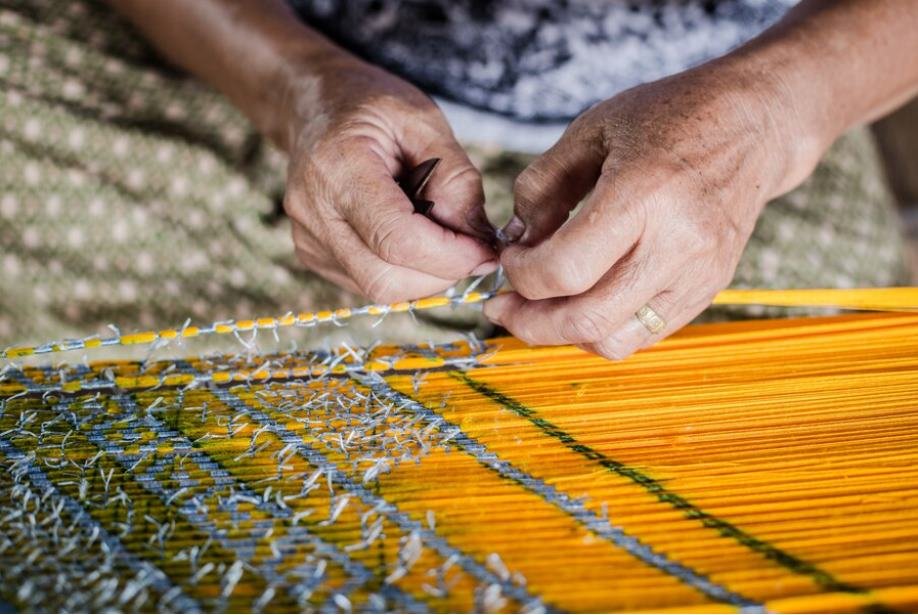Natural and Organic Textiles: Weaving Comfort and Sustainability into Your Life
Natural fibers offer a gentle touch on your skin and a gentle touch on the Earth. Discover organic farming’s role, sustainable processing methods, and exciting innovations shaping the future of eco-friendly fabrics. Empower yourself to make informed choices and join the movement towards a more sustainable fashion industry. Dive in and explore the wonders of natural textiles!

Unveiling the Benefits of Natural and Organic Textiles
Softer on Skin, Gentler on the Planet: Hypoallergenic and eco-friendly choices
For many, comfort extends beyond aesthetics. Natural and organic textiles offer a gentle touch, perfect for sensitive skin. Organic cotton, for example, avoids harsh chemicals used in conventional production, minimizing the risk of irritation and allergies. Additionally, these textiles biodegrade more readily, reducing their environmental impact and contributing to a healthier planet.
Breathable Bliss: Enhanced comfort and temperature regulation
Natural fibers like wool, linen, and hemp possess inherent breathability, allowing air to circulate and moisture to wick away. This translates to increased comfort, especially in warmer climates. Unlike synthetic fabrics that trap heat, natural textiles help regulate body temperature, keeping you cool and dry throughout the day.
Durability You Can Count On: Built to last with natural resilience
While some might associate natural fabrics with fragility, many boast impressive durability. Linen, for instance, known for its strength and longevity, can last for generations with proper care. Additionally, natural fibers often resist pilling and fading better than their synthetic counterparts, making them a wise investment for garments and home textiles alike.
Exploring the Wonders of Natural Fibres


Nature’s bounty offers a diverse array of fibres, each with unique properties and sustainable advantages. Let’s delve into the wonders of some popular natural fibres:
Organic Cotton: The Versatile Champion of Sustainability
Organic cotton reigns supreme for its versatility and eco-friendly credentials. Free from harmful chemicals, it’s gentle on skin and promotes healthy soil practices. From soft t-shirts to durable canvas bags, organic cotton adapts to countless uses, making it a sustainable wardrobe staple.
Linen: Luxurious Strength and Timeless Appeal
Luxuriously soft yet incredibly strong, linen exudes timeless elegance. Naturally breathable and moisture-wicking, it makes ideal summer wear, keeping you cool and comfortable. Linen’s durability ensures garments last for years, reducing textile waste and contributing to a more mindful consumption cycle.
Hemp: The Future of Eco-Friendly Fabrics
Hemp emerges as a frontrunner in sustainable textiles. Incredibly fast-growing and requiring minimal water, it boasts impressive strength and natural resistance to pests and diseases. Hemp fabrics like denim and canvas offer a guilt-free alternative to conventional options, paving the way for a greener future in fashion.
Beyond the Ordinary: Wool, Silk, and Other Natural Gems
Nature’s treasure trove extends beyond the aforementioned. Wool, renowned for its warmth and insulation, provides cozy winter wear while naturally repelling water and dirt. Silk, the epitome of luxury, offers unparalleled softness and breathability, making it a timeless choice for special occasions. From bamboo’s moisture-wicking properties to coconut’s quick-drying nature, a plethora of natural fibres await exploration, each offering unique benefits and contributing to a more sustainable textile landscap

Organic Farming: The Foundation for Sustainable Textiles
The journey towards sustainable textiles begins with the very seed. Organic farming practices form the crucial foundation, fostering healthy ecosystems, responsible resource management, and ethical sourcing practices.
Cultivating Goodness: Responsible practices for healthy soil and ecosystems
Organic farming rejects the use of synthetic chemicals and fertilisers, relying instead on natural methods like crop rotation, compost, and beneficial insects. This nurtures healthy soil teeming with microbial life, improving fertility and water retention. By protecting biodiversity, organic farms foster natural pest control and create havens for diverse wildlife, contributing to a healthier planet.
Minimising the Impact: Reduced water usage and lower carbon footprint
Conventional textile production is notorious for its water-intensive processes. Organic farming, however, uses water more efficiently due to improved soil health and reduced reliance on chemical irrigation. Additionally, by avoiding synthetic fertilisers and relying on renewable resources like compost, organic farms have a significantly lower carbon footprint, mitigating climate change impacts.
Safeguarding Our Health: Eliminating harmful chemicals and pesticides
Pesticides and chemicals used in conventional textile production can have detrimental effects on human health, from farm workers exposed during cultivation to consumers wearing finished products. Organic farming safeguards both by prohibiting these harmful substances. This creates a safer working environment for farmers and ensures you wear textiles free of harsh chemicals, promoting well-being for all.

Supporting Ethical Sourcing: Fair treatment for farmers and workers
Organic farming principles often intertwine with fair trade practices. Organic certifications often require fair wages and safe working conditions for farmers and workers throughout the supply chain. Choosing organic textiles empowers communities, promotes equitable treatment, and ensures your clothing choices align with ethical values.

From Plant to Fabric: The Processing Journey
The transformation of natural fibres into beautiful fabrics doesn’t end with cultivation. Every step, from dyeing to finishing, plays a crucial role in defining the sustainability and ethical impact of the final product.
Natural Dyes: Vibrant Colours from Nature’s Palette
Embrace the beauty of nature! Natural dyes derived from plants, minerals, and insects offer vibrant and unique colour palettes. These dyes are biodegradable, reducing chemical pollution and minimising harm to aquatic ecosystems. Opting for naturally dyed fabrics allows you to wear a piece of nature’s artistry while safeguarding the environment.
Gentle Processing: Preserving the integrity of the fibres
Harsh chemical treatments often sacrifice the inherent qualities of natural fibres. Gentle processing methods, like mechanical softening or low-impact bleaching, help maintain the strength, breathability, and softness of the fabrics. By choosing garments processed with minimal chemical intervention, you ensure their longevity and comfort while minimising environmental damage.
Transparency and Certifications: Understanding the labels and standards
Navigating the world of sustainable textiles can be confusing. Look for certifications like GOTS (Global Organic Textile Standard) or OEKO-TEX Standard 100. These certifications verify the organic origin of the fibres and ensure responsible processing practices throughout the supply chain. Understanding these labels empowers you to make informed choices that align with your values.
Avoiding Harmful Chemicals: Minimising environmental and health risks
Conventional dyeing and finishing processes often rely on harmful chemicals that can pollute waterways and pose health risks to workers and consumers. Choosing fabrics processed with non-toxic alternatives, like vegetable-based dyes and low-impact finishing agents, protects both the environment and your well-being.
The Future of Textiles: A Greener Horizon
The textile industry is at a crossroads, but the path towards a greener future is paved with innovation, conscious consumerism, and collaborative efforts.
Resources
- The Sustainable Apparel Coalition: https://apparelcoalition.org/ (Provides a comprehensive overview of sustainable fashion, including organic textiles and resources for brands and consumers)
- Good On You: https://directory.goodonyou.eco/ (Directory of sustainable clothing brands, information on various sustainable materials, and resources for consumers to learn about ethical and eco-friendly clothing)
- Textile Exchange: http://textileexchange.org/ (Extensive information on organic cotton, resources for brands and consumers, including standards and certifications)
- The Business of Fashion: https://global-standard.org/ (Guide to cotton production, including organic cotton and its environmental impact)
Natural and Organic Materials Resources:
- Organic Consumers Association: https://organicconsumers.org/buying-guide/ (Information on the benefits of organic textiles and concerns about the environmental and health impacts of conventional textiles)
- Rodale Institute: https://rodaleinstitute.org/why-organic/organic-basics/ (Explanation of organic cotton production and its benefits)
- Global Organic Textile Standard (GOTS): https://global-standard.org/ (Information and resources on the GOTS certification for organic textiles, ensuring organic production and responsible labor practices)
